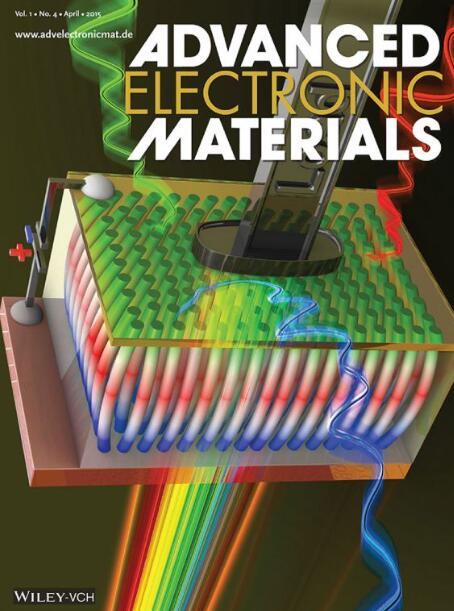High-Density Flexible Neural Implants with Submicron Feedline Resolution
IF 5.3
2区 材料科学
Q2 MATERIALS SCIENCE, MULTIDISCIPLINARY
引用次数: 0
Abstract
The development of high-density microelectrode arrays (MEAs) for large-scale brain recordings requires neural probes with reduced footprints to minimize tissue damage. One way to achieve this is by implementing dense electrode arrays with narrower feedline dimensions, though this increases susceptibility to capacitive coupling between electrical interconnects. To address this, this study explores the resolution limits for high-density flexible MEAs by optimizing the fabrication using optical contact lithography (OCL) and electron beam lithography (EBL). OCL enables metal feedlines with widths of 520 nm and interconnect spaces of 280 nm, while EBL allows the realization of 50 nm feedlines with 150 nm spaces on flexible parylene C substrates. Based on these techniques, we fabricate a flexible 64-channel intracortical implant with a miniaturized cross-section of only 50 × 6 or 70 × 6 µm2. In vivo validation in awake rats demonstrates that the fabricated, high-density flexible intracortical implants with submicron feedline resolution offer low-impedance electrodes and reduced crosstalk, enabling reliable neuronal recordings. These findings demonstrate the feasibility of miniaturizing flexible MEAs using a single-metal layer process, thereby reducing manufacturing complexity in high-density thin-film polymer-based neural interfaces.

具有亚微米馈线分辨率的高密度柔性神经植入体
要开发用于大规模脑记录的高密度微电极阵列(MEA),就必须减少神经探针的占地面积,以尽量减少对组织的损伤。实现这一目标的方法之一是采用馈线尺寸更窄的密集电极阵列,但这会增加电互连之间电容耦合的易感性。为了解决这个问题,本研究通过使用光学接触光刻(OCL)和电子束光刻(EBL)优化制造工艺,探索了高密度柔性 MEA 的分辨率极限。光学接触光刻可实现宽度为 520 nm 的金属馈线和 280 nm 的互连空间,而电子束光刻则可在柔性对二甲苯 C 基底上实现 50 nm 的馈线和 150 nm 的空间。在这些技术的基础上,我们制造出了柔性 64 通道皮质内植入体,其微型横截面仅为 50 × 6 或 70 × 6 µm2。在清醒大鼠体内进行的验证表明,制造出的高密度柔性皮层内植入体具有亚微米馈线分辨率,可提供低阻抗电极并减少串扰,从而实现可靠的神经元记录。这些发现证明了使用单金属层工艺实现柔性 MEA 微型化的可行性,从而降低了基于高密度薄膜聚合物的神经接口的制造复杂性。
本文章由计算机程序翻译,如有差异,请以英文原文为准。
求助全文
约1分钟内获得全文
求助全文
来源期刊

Advanced Electronic Materials
NANOSCIENCE & NANOTECHNOLOGYMATERIALS SCIE-MATERIALS SCIENCE, MULTIDISCIPLINARY
CiteScore
11.00
自引率
3.20%
发文量
433
期刊介绍:
Advanced Electronic Materials is an interdisciplinary forum for peer-reviewed, high-quality, high-impact research in the fields of materials science, physics, and engineering of electronic and magnetic materials. It includes research on physics and physical properties of electronic and magnetic materials, spintronics, electronics, device physics and engineering, micro- and nano-electromechanical systems, and organic electronics, in addition to fundamental research.
 求助内容:
求助内容: 应助结果提醒方式:
应助结果提醒方式:


